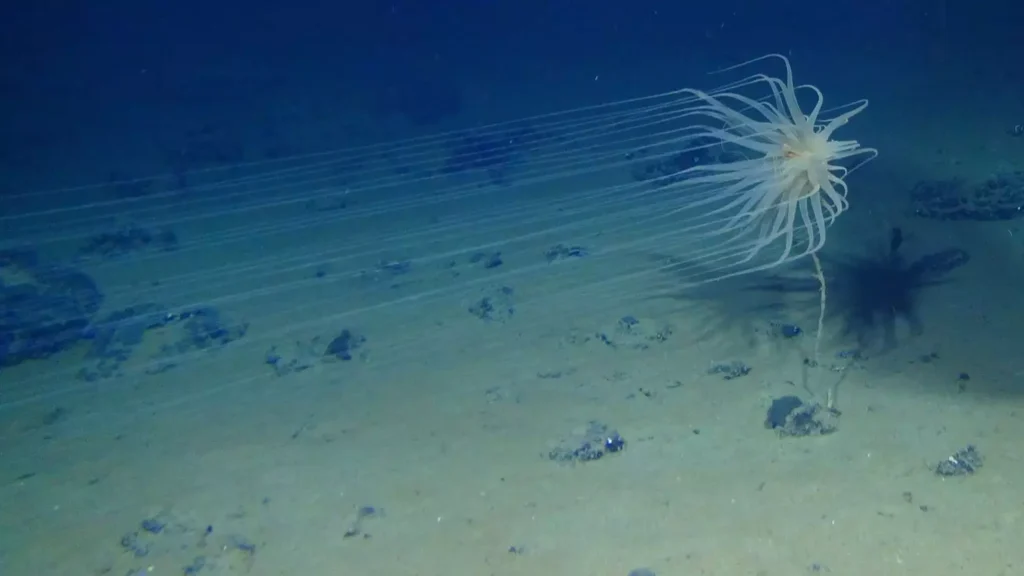Scientists have discovered dark oxygen being produced more than 13,000 feet below sea level.
About Dark Oxygen:
- Dark oxygen is formed by polymetallic nodules found on the seafloor in the Clarion-Clipperton Zone (CCZ), which spans approximately 4.5 million square kilometres (1.7 million square miles).
- These nodules are coal-like mineral rocks containing manganese and iron.
- They catalyse the splitting of seawater (H2O) into hydrogen and oxygen without requiring sunlight or photosynthesis.
- This process contradicts the previously held belief that marine plants produce the most oxygen in marine environments through photosynthesis.
- The discovery challenges existing paradigms about oxygen production in Earth’s most inaccessible marine environments.
- The implications of this research extend to hypotheses on the origins of life on Earth, suggesting that aerobic life might have existed before the rise of photosynthesis.
- It also opens possibilities for similar processes occurring on other planets, indicating potential habitats for life.
Ref: Source
| UPSC IAS Preparation Resources | |
| Current Affairs Analysis | Topperspedia |
| GS Shots | Simply Explained |
| Daily Flash Cards | Daily Quiz |
Frequently Asked Questions (FAQs):
What is dark oxygen?
Dark oxygen is oxygen produced by polymetallic nodules on the seafloor that split seawater into hydrogen and oxygen without sunlight or photosynthesis.
Where is dark oxygen found?
Dark oxygen is formed in the Clarion-Clipperton Zone a region spanning approximately 4.5 million square kilometres on the seafloor.
What is the Clarion-Clipperton Zone (CCZ)?
The Clarion-Clipperton Zone is a large area of the Pacific Ocean seafloor known for its abundance of polymetallic nodules.
What is photosynthesis?
Photosynthesis is a process where plants and some other organisms use sunlight to synthesize nutrients from carbon dioxide and water.



